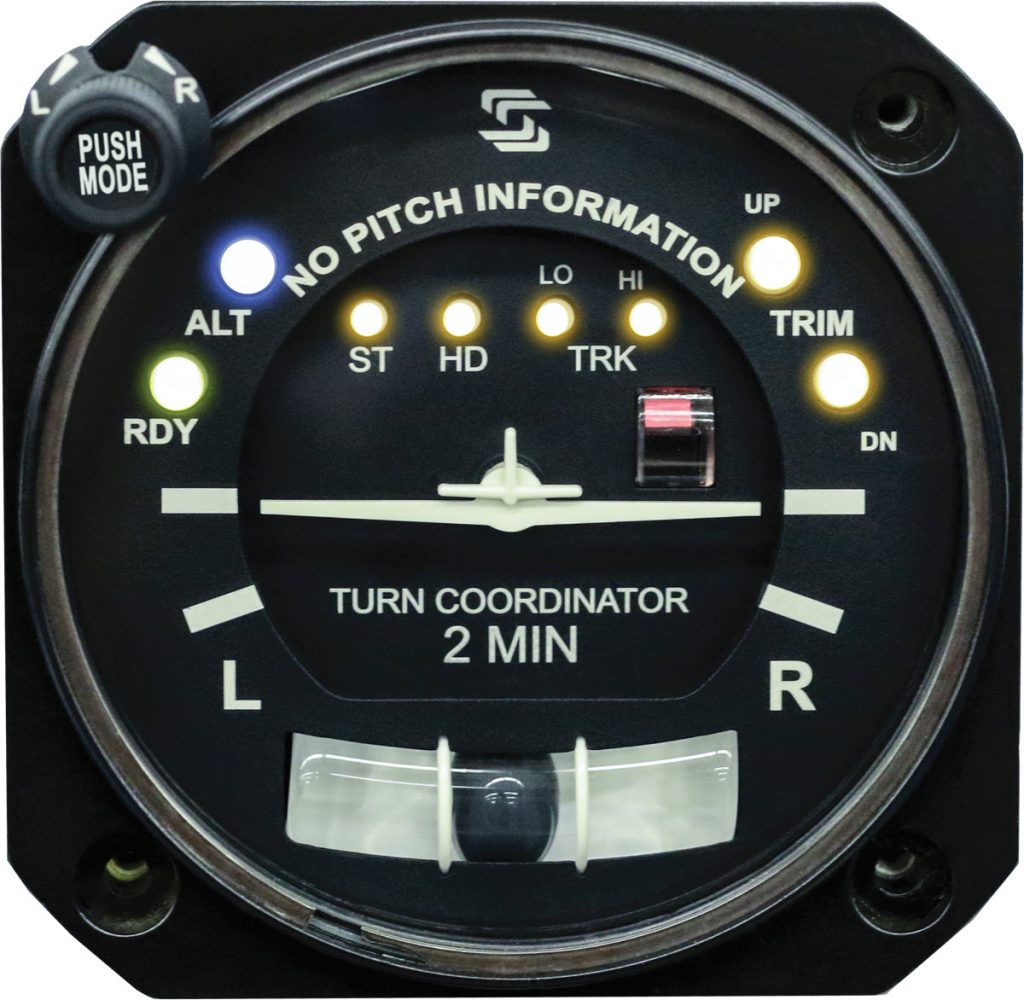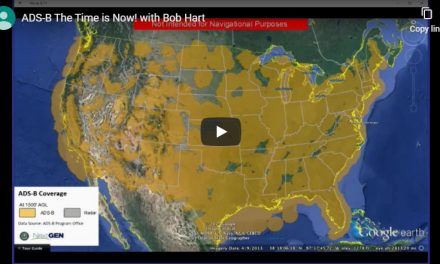At Oshkosh in 2017, the autopilot market got a shakeup with the news that Garmin was now entering the autopilot aftermarket (their autopilot was OEM prior to that) and that two manufacturers of autopilots for the experimental/light sport market (for 20 years) were now “certified.” Before that, there was S-TEC.
S-TEC Corporation got its start in 1978 in Mineral Wells, Texas, and is still located there, right down the street from Century Flight Systems. Who, you may ask? The fact is, prior to 1978, Piper Autopilots, later to become Century Flight Systems, and Cessna’s ARC Division were the dominant sources for autopilots in GA aircraft. Century has drifted from the public eye. Frankly, I’m not sure why. Before we get into Genesys Aerosystems/S-TEC, I think it might be fun to take a look at the autopilot market before S-TEC.
In the late ’50s, many companies were developing autopilots, including ARC (for Cessna), Tactair, Lear, Sperry, Brittain, and Mitchell. In the early ’50s, Don Mitchell designed his first autopilot and installed it in a Beechcraft. By 1961, Mitchell /Edo Aire had six models of autopilots available, from the basic Co-pilot, a single-axis wing-leveler with heading lock, up to the Commander, a fully automatic two-axis system with features way beyond its day. This became the foundation for Piper Autopilots, and later, in 1983, Mitchell/Edo Aire became Century Flight Systems, which continued to make autopilots for Piper Aircraft.
Early Piper Autopilots were made by Mitchell and labeled as Piper Autopilots until Century Flight Systems was established. At that point autopilots found in Piper aircraft were labeled Century models. Piper first offered a factory-installed autopilot in 1958, and it was an option even on the relatively basic Tri-Pacer. The Aztec was the workhorse of the Piper fleet at the time, and autopilots were a popular option even then.
Cessna first introduced an optional autopilot in the 1962 172C model, and their choice of manufacturer for factory-installed autopilots and avionics was Cessna’s own division known as ARC. Aircraft Radio Corporation (ARC) got its start in 1924 and played a significant role in the development of early avionics. You may be aware of the famous flight by Jimmy Doolittle in a Consolidated NY-2 aircraft in which “blind-flight” was first demonstrated. That was possible through the efforts of ARC, Sperry, and others. ARC also went on to develop avionics used in military aircraft in WWII. After the war, Cessna Aircraft Corporation purchased ARC and changed its name to Aircraft Radio and Control (thus keeping the ARC “handle”), and a whole new division of Cessna was created for the sole purpose of developing, manufacturing, and supplying avionics and autopilots to be installed exclusively in Cessna aircraft.
The simpler versions of the early Piper/Century and Cessna/ ARC autopilots were rate-based and used the aircraft’s turn and bank for sensing. The Piper AutoFlite II, for example, later to become the Century I, was a simple wing-leveler. Later, Piper and Century’s autopilots became more capable and position-based using the aircraft’s mechanical, vacuum-driven attitude indicator for sensing. Cessnas simpler models like the Nav-O-Matic 200 and 300 were basic wing-levelers and rate-based also using the turn and bank, but like Piper, the more sophisticated autopilots from Cessna switched to the vacuum attitude indicator as sensor. Bendix King came to life in 1984 and quickly got into the autopilot market as an OEM option. They produced both rate-based (T&B) and position-based autopilots (AI) but their better systems were also dependent on the vacuum system. The bottom line is that the best autopilots available prior to S-TEC were all dependent on the aircraft’s vacuum system. The engineers at S-TEC had a better idea.

S-TEC Autopilots
As I mentioned, S-TEC Corporation got its start in 1978. Frankly, it’s hard to tell whether S-TEC was considered a hot potato or a hot commodity, because they have been bought and sold numerous times since then by larger aerospace firms. Meggitt acquired S-TEC and their Unmanned Division in 2000. I didn’t know they were into the drone market back then. Cobham bought S-TEC in 2008 and sold S-TEC to Genesys in 2014. Moog purchased Genesys in 2020 and acquired the S-TEC line in the process. From a pilot and avionics consultant’s perspective, S-TEC, through all this, has remained the leading autopilot manufacturer for small to mid-sized aircraft so — I’m going with hot commodity.
I mentioned the better idea. The electrically driven turn and bank, now more commonly known as the turn coordinator, is considerably more reliable (and has a longer life) than an aircraft’s vacuum attitude indicator. We can blame dirty air for a lot of this. The aircraft’s vacuum system uses outside air to drive the gyro in an AI. This is protected by a filter system that is designed to keep out dirty air. But it doesn’t!
I had an indoor air quality business in the late ’80s and sold high-efficiency filter systems for commercial applications. We had a term we used called “boulder filters” to describe the common air filter you find on home A/C systems. They stop the big stuff (boulders), but the fine dust (that drives allergies) gets through. This fine dust is why vacuum AI’s frequently fail prematurely, and when they do in an aircraft with an autopilot that is dependent on vacuum, you lose your autopilot. Oh yeah, you just also lost your AI! I don’t know if this was the thinking from the engineers, but S-TEC makes only autopilots that are all electric, rate-based, and not dependent on vacuum. The all-electric S-TEC 3100 is described as “attitude based” and is the replacement for the S-TEC 2100 (no longer in production). The 2100 was the first attitude-based autopilot in the product line for S-TEC thanks to digital Micro-Electromechanical Systems (MEMS) technology. There is no vacuum anything here.

Changes at S-TEC
The rest of this article can be seen only by paid members who are logged in.Have a website login already? Log in and start reading now.
Never created a website login before? Find your Customer Number (it’s on your mailing label) and register here.
JOIN HERE
Still have questions? Contact us here.





